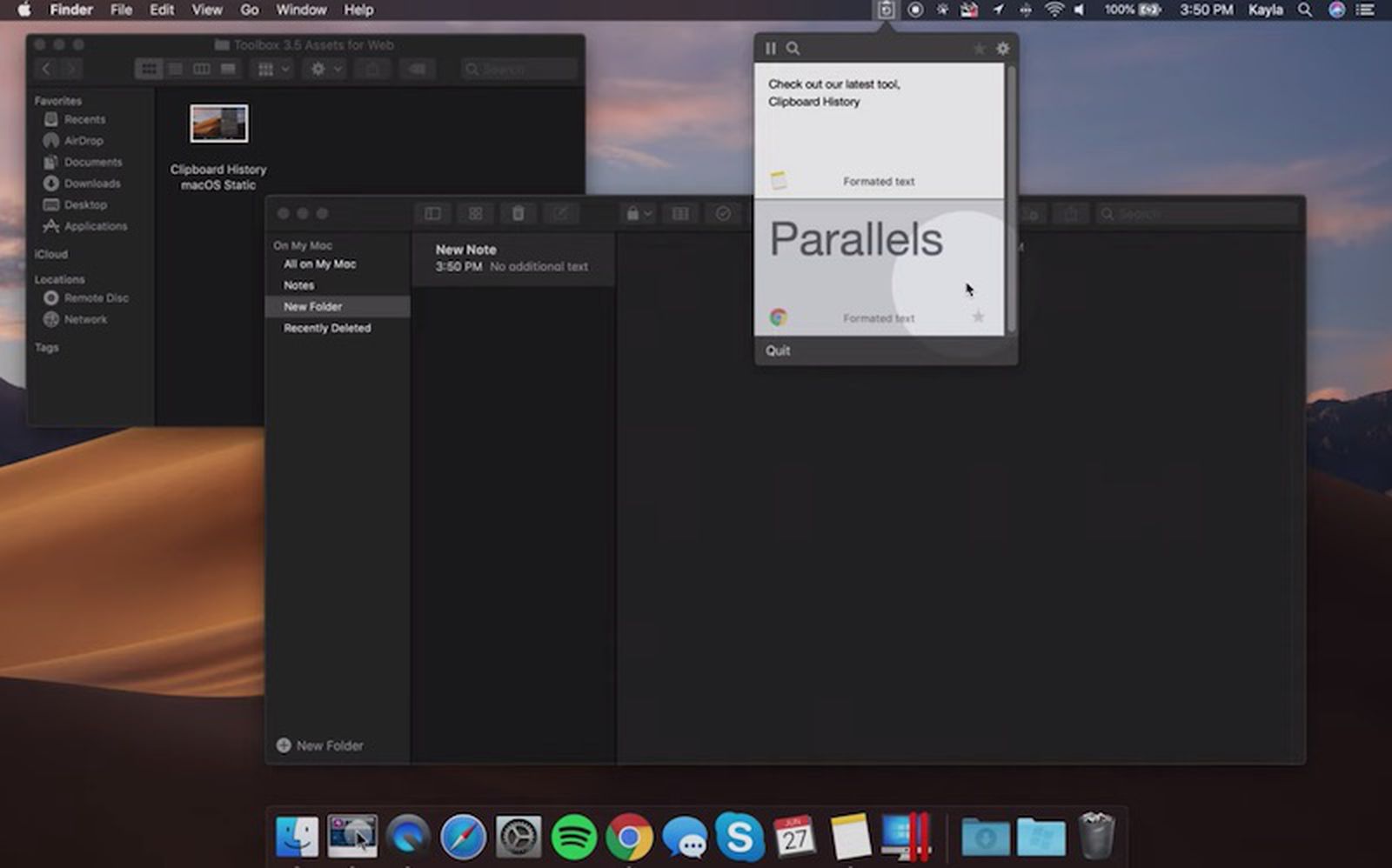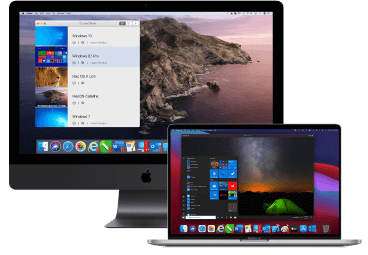Guest blog post from Dmitry Geynisman, Product Manager at Parallels
You may have seen these messages from both macOS and Parallels Desktop for Mac:
Like, Share and SubscribeBig Thanks to Mad Dog The Link Below is to Mad Dog's Channelin. Parallels Desktop 16 for Mac. Optimized for macOS Big Sur. See all the New Features.
No worries, in this blog post I will explain the situation in detail. First, I will give you a relatively short answer about why Parallels® Desktop uses system extensions, and then more details will follow.
- Parallels Desktop uses a hypervisor technology to create a high-performance virtual machine, so you can run Windows, Linux, macOS, and other operating systems inside it.
- There are 2 types of hypervisors on macOS that Parallels can use: Apple’s built-in hypervisor or Parallels’ proprietary hypervisor. Parallels proprietary hypervisor is implemented as a system extension.
- System extensions in macOS enable developers to integrate deep into the macOS system to achieve better performance or provide some unique functionality.
- When Parallels Desktop attempts to load the Parallels hypervisor system extensions, macOS prompts a user to ‘allow’ this. System extensions have elevated privileges and if they are coming from a non-trusted source, can be used maliciously. So, it is a security precaution, similar to how your phone apps ask to access your camera.
If you downloaded Parallels Desktop from parallels.com and the system extension is signed by “Parallels International GmbH”, then you are in good hands.
- Parallels recommends you use Apple’s built-in hypervisor. That way macOS won’t bother you with System Extension approval or the need to reboot. However, if you need to use the Nested Virtualization feature or a specific workload where Parallels hypervisor shows higher performance scores, you may keep using Parallels hypervisor.
Parallels Desktop 16 Supports MacOS Big Sur And Smoother PC ...
- To change a hypervisor type, first, you need to shut down or stop your virtual machine. Note that for this you might need to start or resume the virtual machine and approve Parallels hypervisor system extension.
When your VM is stopped, go to VM configuration > Hardware > CPU & Memory > Advanced Settings > click on the “Hypervisor” dropdown > select “Apple” or “Parallels” respectively.
If you have multiple virtual machines, you may need to change the setting for every one of them.
Now, if you’re not bored yet, I’d love to tell you more about this story.

For more than a decade, Parallels developed its proprietary drivers (aka system extensions) for running Windows and other OSes on top of the macOS. These drivers made Parallels Desktop the best virtualization solution, the fastest, and the most technologically advanced.
At the same time, for several years, Apple has been moving towards making macOS the most secure and reliable desktop OS (and I should say, Apple succeeded in many ways). One of the key aspects is not to let developers intrude on the OS kernel by loading those extensions (aka “kexts”), as those who have access to the kernel can do things at the very heart of your Mac, which may prove quite dangerous. In order to do that, Apple must replace 3rd-party kernel extensions with the native system APIs that ultimately enable the same product features, and that is massive engineering work even for such a big enterprise as Apple.
Since 2017, with the macOS High Sierra 10.13 release, Apple started to block 3rd-party kexts automatically, and users have had to enable them manually since. At that time, we published this blog post that can tell you even more about Parallels Desktop using system extensions.
In March 2020, with the release of macOS Catalina 10.15.4, Apple started to warn users that some of their apps (that use deprecated system extension) would “be incompatible with a future version of macOS” (read: with macOS Big Sur).

At WWDC20, Apple was quoted as saying that “System Extensions improve the reliability and security of macOS, and deprecated kernel extensions will not load by default in macOS Big Sur”. Eventually, to make Parallels Desktop fully compatible with the new macOS Big Sur 11.0, Parallels Engineering has gone through years of engineering work of rebuilding Parallels Desktop and its features using the new macOS system APIs. This extensive and time-intensive development resulted in the all-new Parallels Desktop, explicitly designed to work and integrate with new macOS Big Sur technologies, and at the same time, deliver performance and productivity improvements to benefit Parallels Desktop customers.
This scheme below visually describes the difference between the default Parallels Desktop modes on the corresponding macOS version. The old Parallels Desktop design using Parallels system extensions is shown on the left, and the newly-invented Parallels Desktop 16, using macOS Big Sur APIs, is shown on the right.
For now, our team continues to work on supporting both Parallels and Apple hypervisors and continues collaborating with Apple on implementing the rest of Parallels Hypervisor features to Apple Hypervisor. We recommend using Apple hypervisor, and if you notice any difference between Apple and Parallels hypervisors for your use case, please let us know.
Download a free trial of Parallels Desktop for Mac and try it out yourself.
Join Transform 2021 this July 12-16. Register for the AI event of the year.
As Apple’s Mac computers begin their two-year transition from Intel- to Apple-developed CPUs later this year, one feature that’s going away is Boot Camp — the Mac’s ability to boot directly into Windows and run PC apps natively. But Corel’s Parallels Desktop will still be there to let Mac users run Windows, and in this year’s version 16, it will thankfully be faster, more compatible, and easier to use than ever.
Like Parallels Desktop 15, version 16 is an emulator that allows users to load a complete operating system or individual apps within macOS, treating them as windows within the Mac environment. Once again, high-end Business, mid-range Pro, and regular Standard versions are available. With the latest Business version of Parallels Desktop, an IT department can create, deploy, and remotely manage a profile-customized Windows system that Mac users download in a compact file size and expand on their own machines.
A simpler Pro version includes the file-compacting feature used to more easily transfer virtual machines between computers, achieving as much as 20 times compression for Linux installs and 75% faster Linux git status executions. The standard version includes a manual Free Up Disk Space feature with archiving and space reclaiming options.
All three versions of Parallels Desktop 16 include significant 3D graphics improvements that let a wider range of PC, Linux, and even Mac apps run in emulated mode. The new release expands beyond the 200,000 Windows apps already supported in Parallels Desktop 15, adding enhanced support for OpenGL 3.2 apps on Windows, OpenGL 3 on Linux, and Metal 3D apps when running macOS Big Sur in a virtual machine. Collectively, the graphics updates give Mac users access to interior design, molecular modeling, and other PC apps that wouldn’t open under prior Parallels Desktop releases. Users with AMD Radeon graphics cards will also see up to 20% faster performance, though Macs’ more common Intel graphics chips won’t see similarly obvious gains.
Under the hood, version 16 has completely replaced the prior third-party system extensions with Apple’s Hypervisor, a massive task that apparently took the equivalent of 25 human-years of effort but results in a Big Sur-compliant, smoother experience for users. Corel’s elimination of deprecated kernel extensions in favor of Big Sur frameworks means Desktop will no longer have to ask for special passwords and permissions during installation and part of the virtualization will rely on Apple’s own code. At the same time, the software will support more USB devices, enable multitouch zoom and rotate gesture support in Windows apps, and benefit from other performance enhancements.
Some improvements will be in the speed department, including Desktop launching twice as fast, 17% faster Windows startups and shutdowns, 20% faster Windows resumes, and 16% faster Windows downloads. Support for running Windows in “travel mode” extends a Mac laptop’s battery life by 10%, including disabling battery-chomping Windows updates while on the road. An enhanced Windows auto-pause feature can freeze the OS after the user’s choice of inactivity periods — ranging from 10 seconds up to one or more minutes — further extending battery life.
Desktop 16 also includes a number of cosmetic updates, including redesigned internal icons that match Big Sur’s and carryovers of native Mac folder and file icons in Windows when accessing OS-shared files. In the quality-of-life department, Corel has made Windows even easier to set up by removing a mid-install dialog box that could pause installations for no good reason. It has also added a “reclaim space on shutdown” feature that automatically reduces the virtual machine’s footprint when it’s not being used.
Parallels Desktop will be able to run macOS Big Sur within a virtual machine the day Apple’s OS officially launches, and any issues will be resolved in a rapid update. Desktop 16’s support for Big Sur as a host OS will come shortly after Big Sur is released to the public. Corel is including complimentary subscriptions to both the remote computer screen-sharing tool Parallels Access 6 and the Parallels Toolbox 4 utility grab bag as perks for Desktop users.

The standard Desktop edition costs $100 for a perpetual license or $80 for an annual subscription, with the Pro and Business editions each going for $100 per year as subscriptions. Prior users of the standard edition can upgrade to a perpetual version 16 license for $50 total or a new Pro subscription for $50 per year.
VentureBeat
Parallels Desktop Mac Big Sur
VentureBeat's mission is to be a digital town square for technical decision-makers to gain knowledge about transformative technology and transact.Our site delivers essential information on data technologies and strategies to guide you as you lead your organizations. We invite you to become a member of our community, to access:- up-to-date information on the subjects of interest to you
- our newsletters
- gated thought-leader content and discounted access to our prized events, such as Transform 2021: Learn More
- networking features, and more
